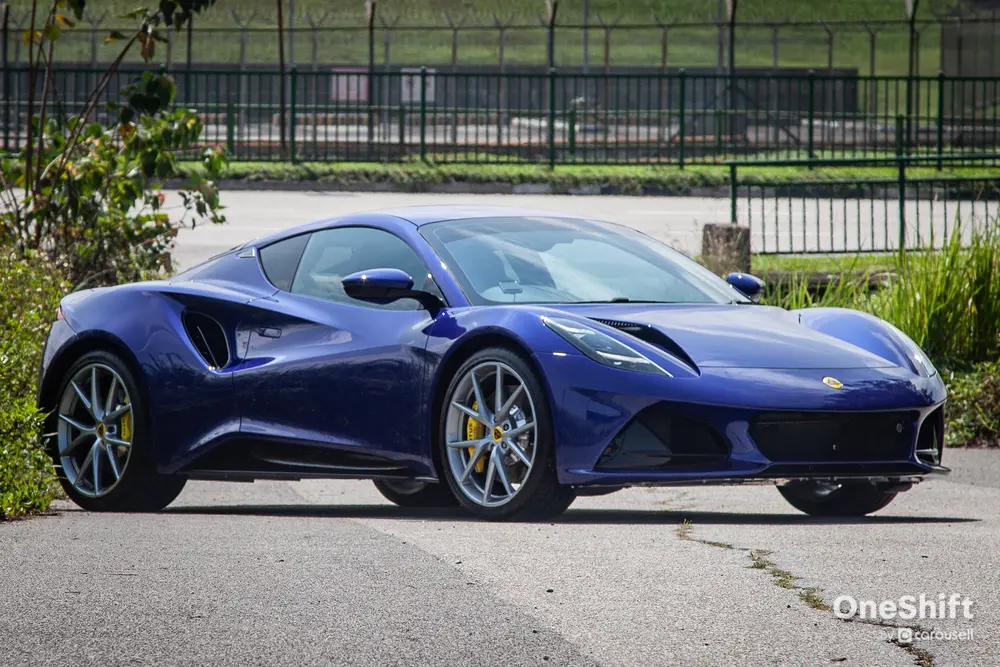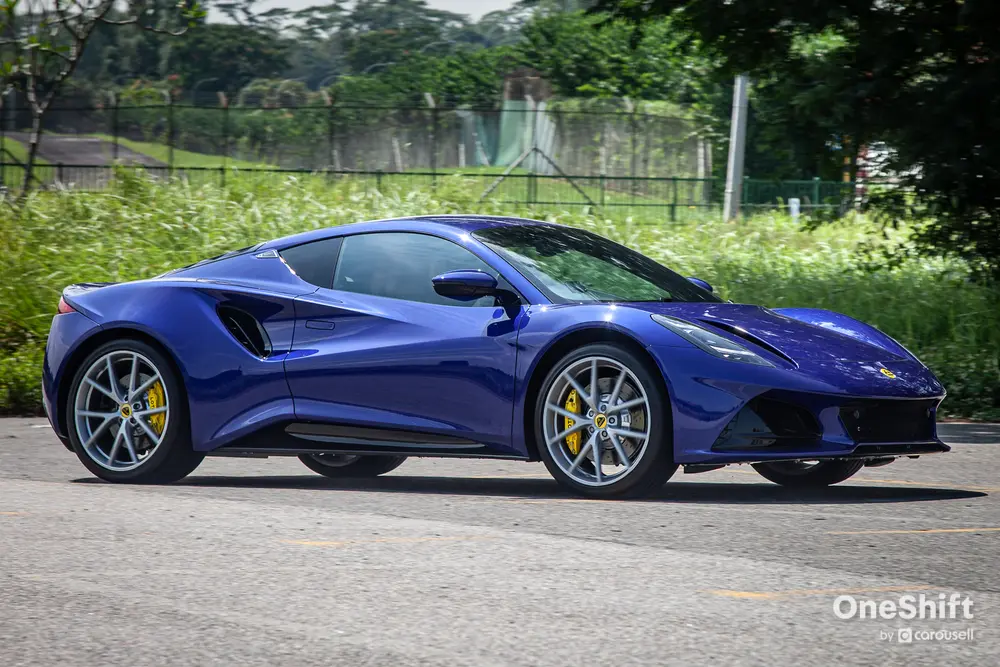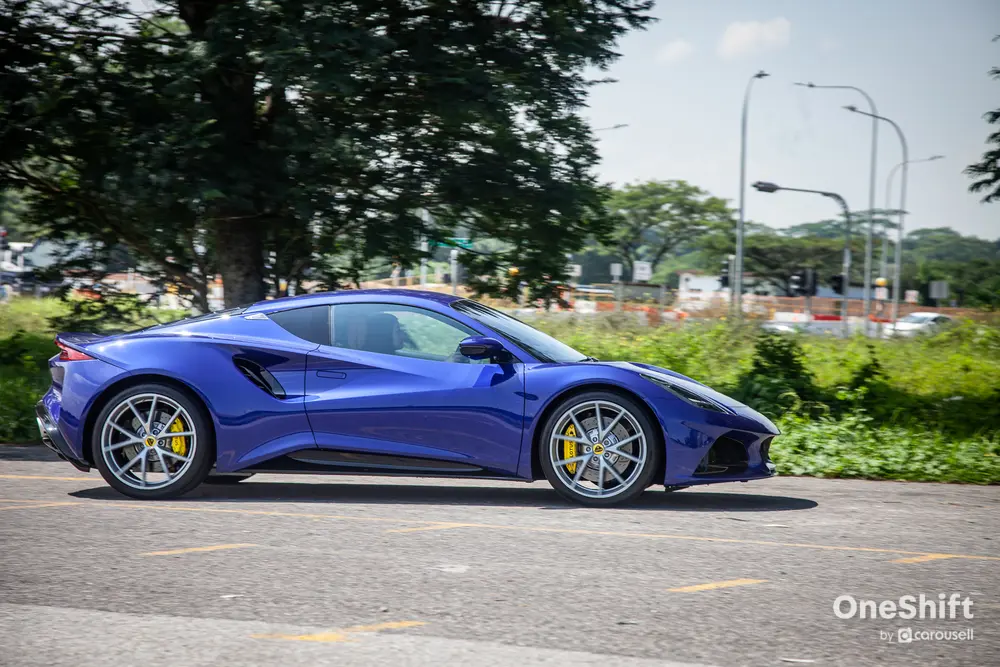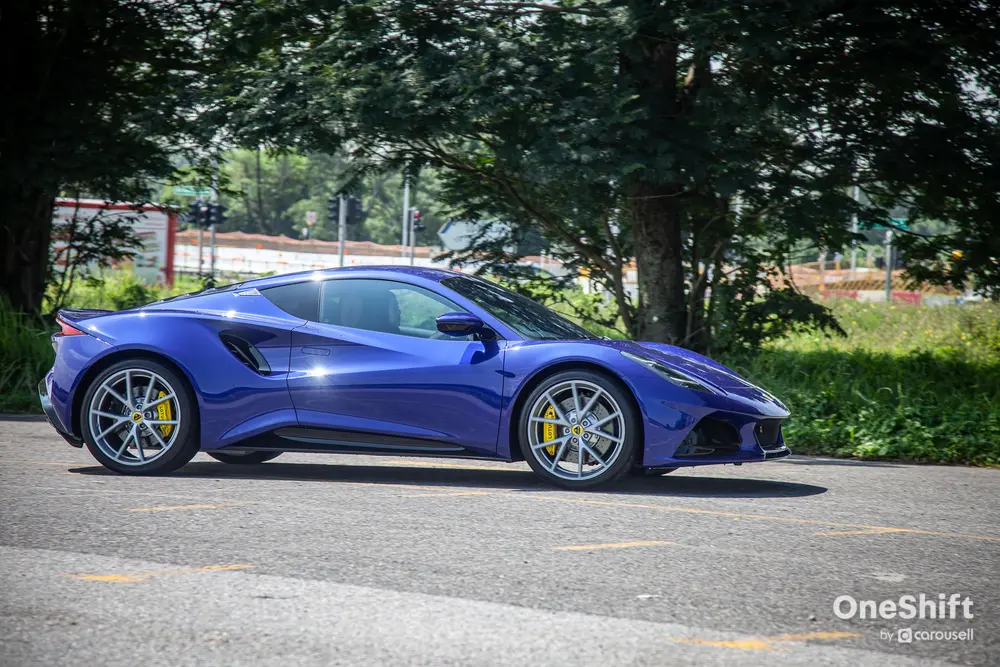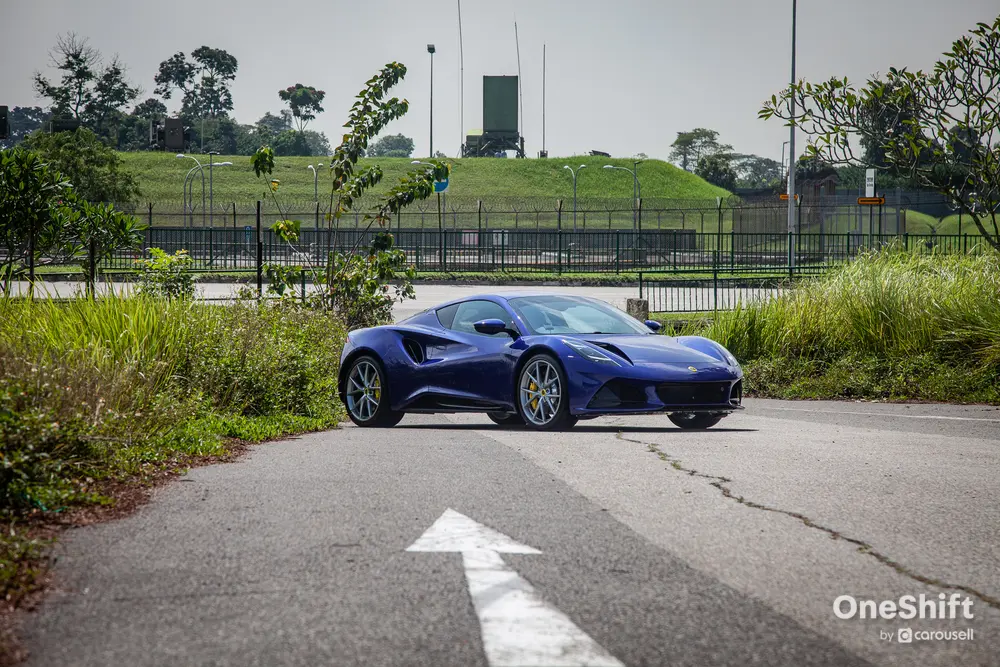Lotus Emira 2.0 First Edition Review: The Last Bastion of the Chapman Spirit
Lotus’ last petrol-driven sports car offers a wider breadth of abilities than ever before, but at a hefty price tag.







Lotus’ past few decades were nothing short of a roller-coaster, but with its Chinese owners Geely, it has finally found some stability and direction like never before.

We saw its first hypercar in years - in fact, the Evija is the most powerful series production road car at its launch with 2,000 PS. And, it’s electric. That’s an important theme that we will see emanate into the rest of its products like the Eletre SUV and the Emeya four-door GT.

For those of us used to seeing the Elise and Exige growing up, these newfangled electric vehicles would be very alien. That’s where the Emira comes in, which is essentially the halo product of the Lotus range that’s meant to be a concentration of all of the traditional values of a Colin Chapman product. It’s built in Hethel in the UK, unlike its electric counterparts, and it’s the last ICE car you’d ever see from Lotus.
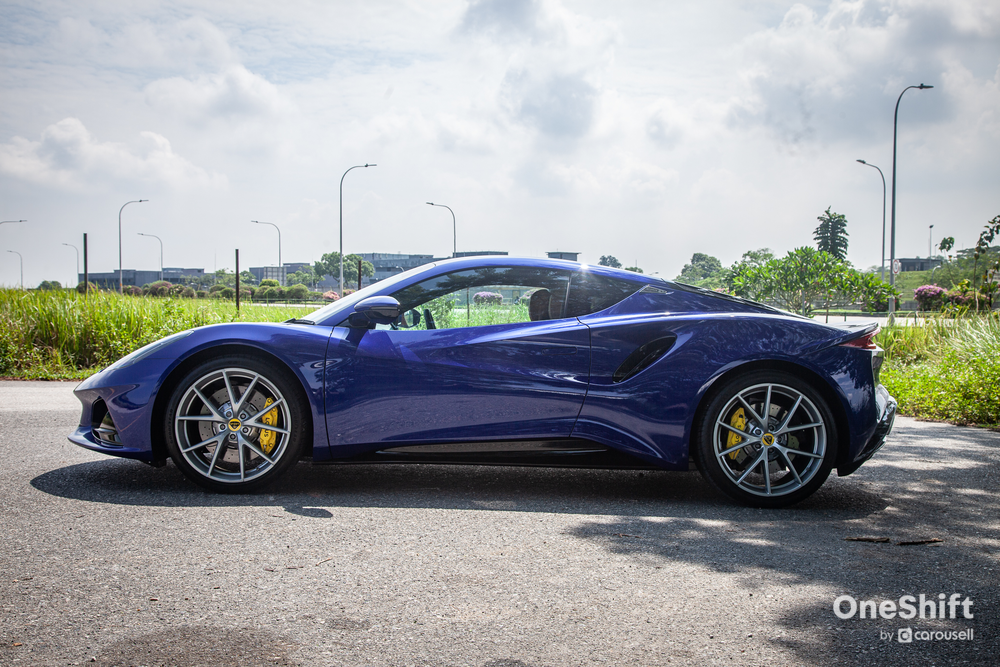
But unlike the hardcore Elise/Exige, the Emira takes after the more rounded Evora, which assumes you may want a Lotus that’s actually comfortable enough to drive to work or to get groceries. There’s 208-litres of storage behind the seats, as well as a rear luggage compartment offering a further 151-litres. Oddly, the front bonnet offers no stowage. But overall, rather practical (for a two-door Lotus).
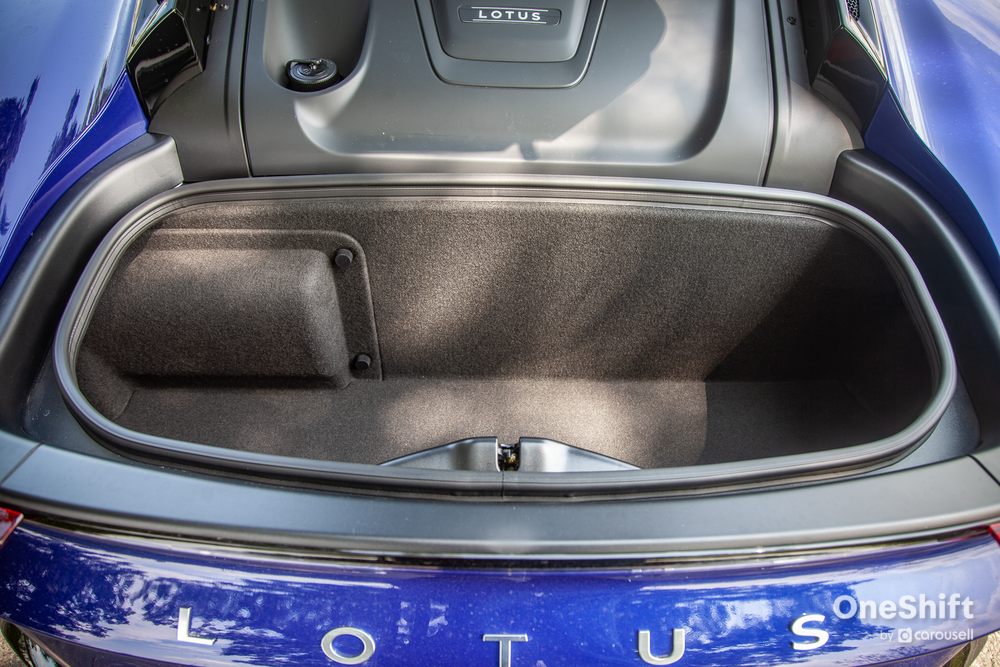
So when you first step into the Emira, you would be pleasantly surprised by the padded leather seats, the slick 10.25-inch touchscreen and 12.3-inch digital instrument cluster, and even the 560W KEF sound system. This probably is the most inviting two-door Lotus interior ever.
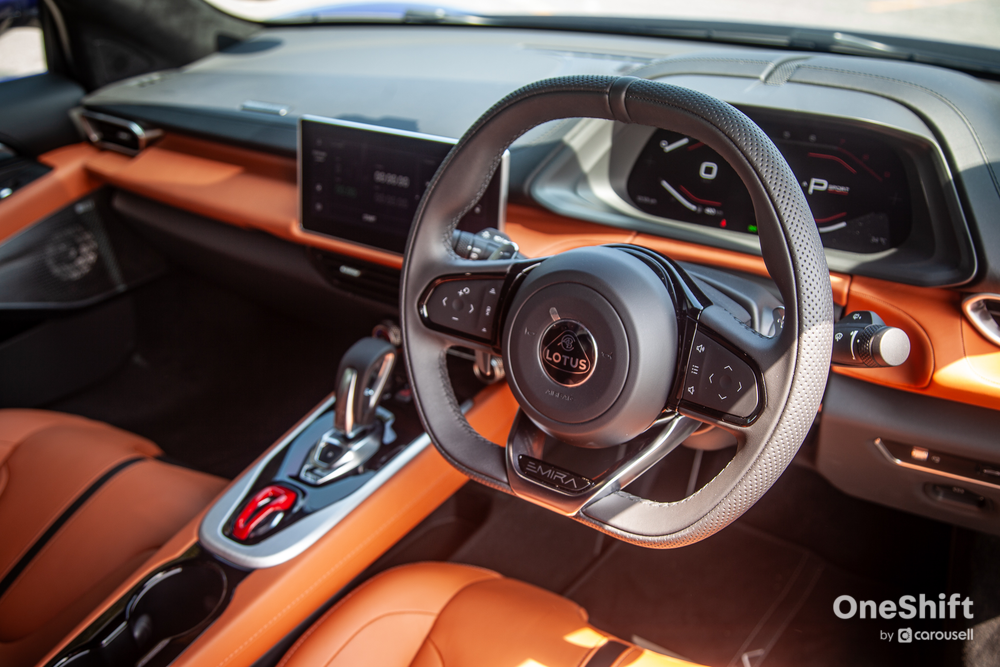
With a 8-speed dual-clutch transmission, it’s probably one of the easiest Lotus sports cars to drive too. Snagged from Mercedes-AMG, the automatic gearbox is unlike the one in the automatic Emira V6, because the latter is equipped with a torque converter. It has bespoke calibration to match the transmission’s shift-mapping.

So, just shift to Drive, and go. However, the peculiar thing about the Emira’s DCT gear knob is that it requires some effort to actually engage a gear. A few times shifting from Park to Drive, I went into Neutral instead. It’s probably a small issue that needs a tiny adjustment, but since it’s used all the time, it’s rather annoying. Ed: Lotus says there's a software update that'll make the gear shifter react a lot faster.
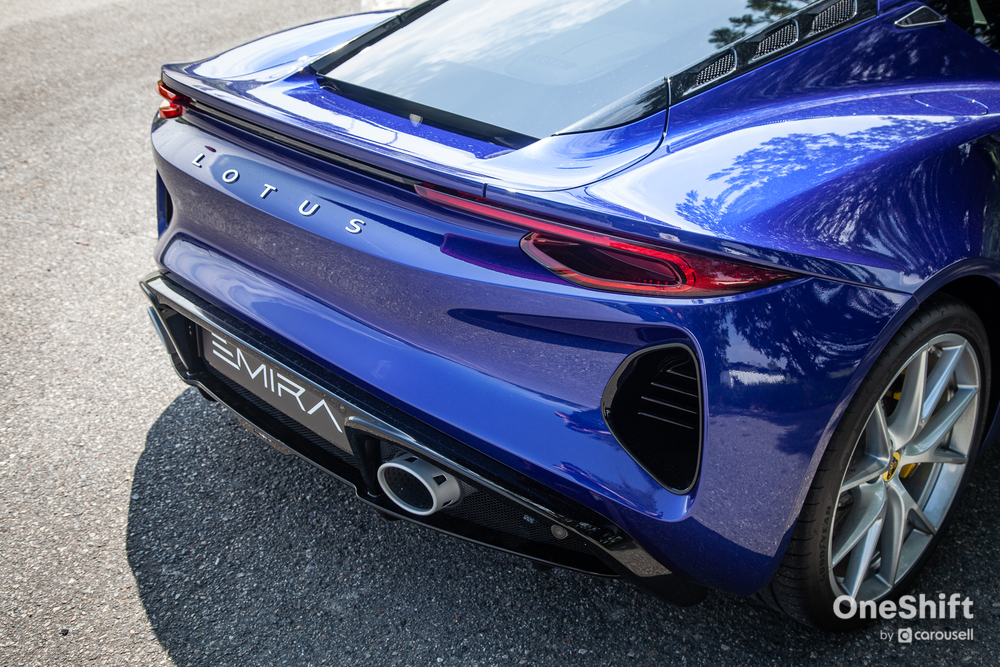
Another thing sourced from Mercedes-AMG is the 2.0-litre I4 turbo, which is the world’s most powerful four-cylinder in series production. That’s a nice place to start, isn’t it? With 360 bhp and 430 Nm, it delivers 180 bhp/litre - the highest specific power output of the entire Emira range.
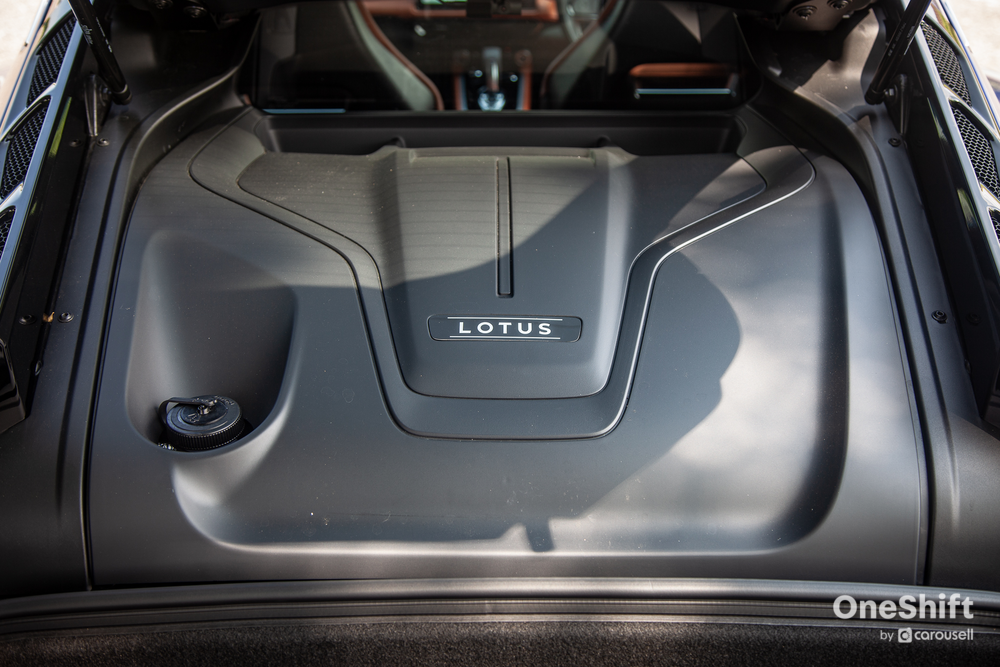
It’s been modified to fit into the Emira, such as the transverse mounting, a new air intake system and exhaust, as well as the not insignificant matter of sending power to the rear wheels (instead of all four as in the AMG 45 models). A new cast aluminium rear subframe (enabled by the I4) takes the place of steel in the V6, which saves 12 kg. 0-100 km/h is accomplished in 4.4 seconds, and I can confirm, the ‘base’ Emira has all of the speed you could ever want. For Singapore roads, there’s really no need for the V6 - especially if you opt for an automatic.
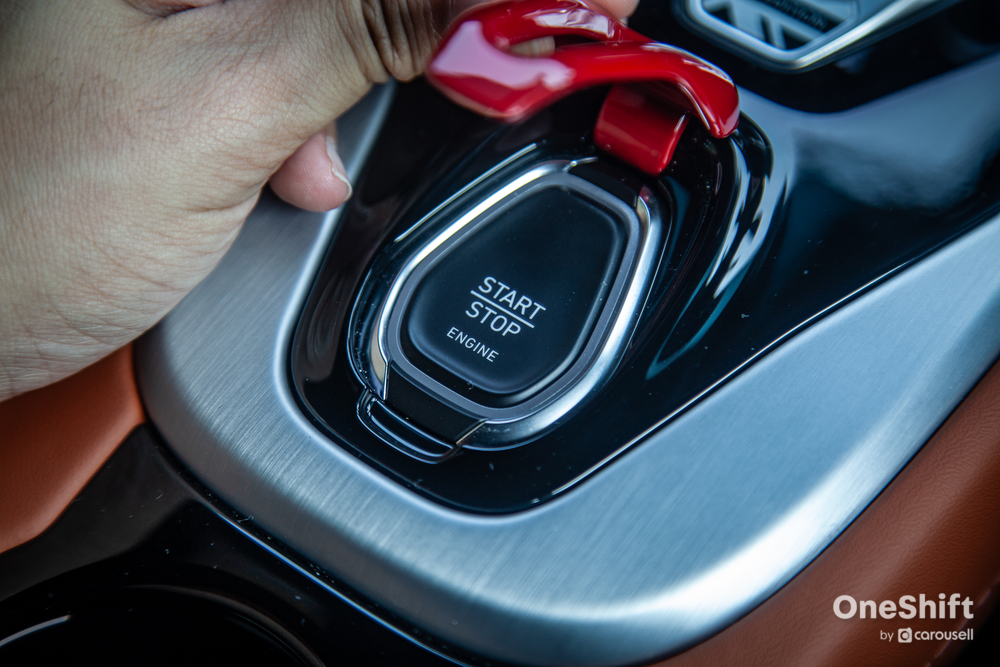
But Lotus has never been about the speed, but more about its magical handling. The Emira is developed on Lotus’ new Sports Car Architecture (SCA), a new lightweight bonded aluminium chassis - a feature that Lotus has been using for its sports cars for decades. It also has forged aluminium double-wishbone suspension all round (Eibach springs and Bilstein dampers), adjustable via the Tour, Sport or Track driving modes.
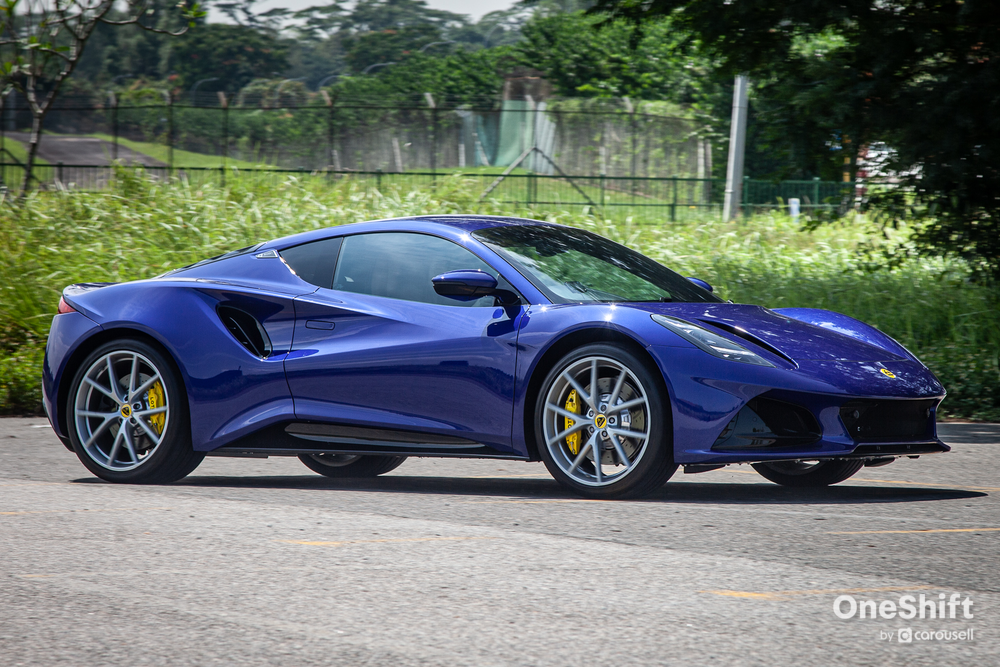
So it’s no surprise then, that the Emira is scintillating to drive. Tipping the scales at only 1,446 kg, the Emira is company to the best of the mid-engined sports cars on a good road. Its agile, sharp and nowhere near bloated - although do not expect the engagement of the Elise or the Exige. It’s properly comfy and is probably more similar to the Porsche Cayman.
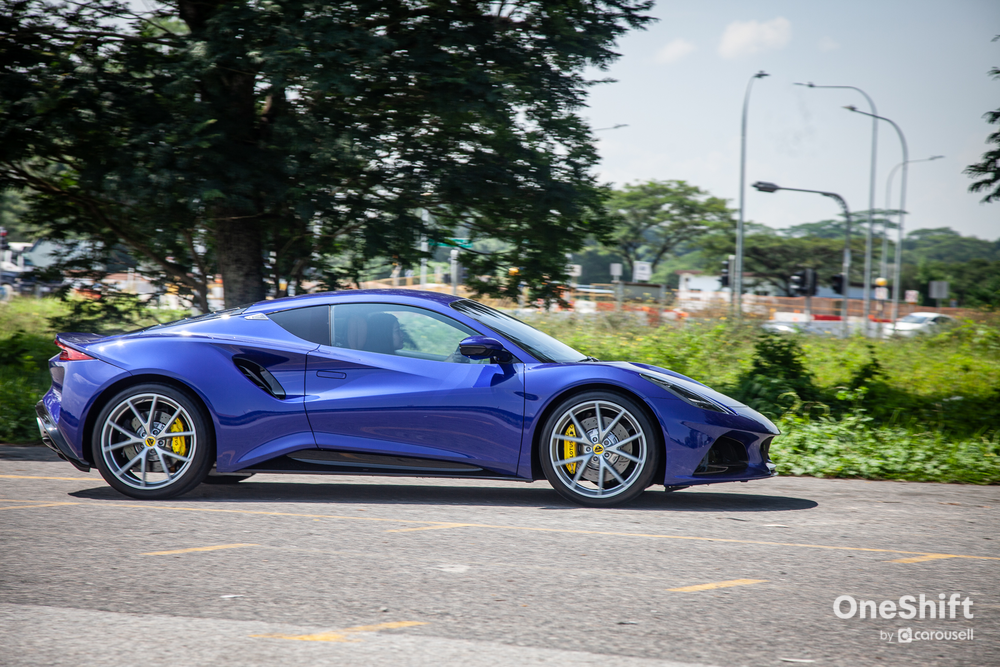
And therein lies the problem really. The Emira First Edition is asking close to half a million bucks without COE. The Cayman S, which most closely matches the specifications of the Emira, starts at less than $400k without COE. And despite the Porsche being an older product, I think it still has a nicer interior with better materials and build quality. That said, if you option out the Cayman like-for-like, it would probably be priced very close to the Emira. Then it is really down to which car tugs at your heartstrings more.
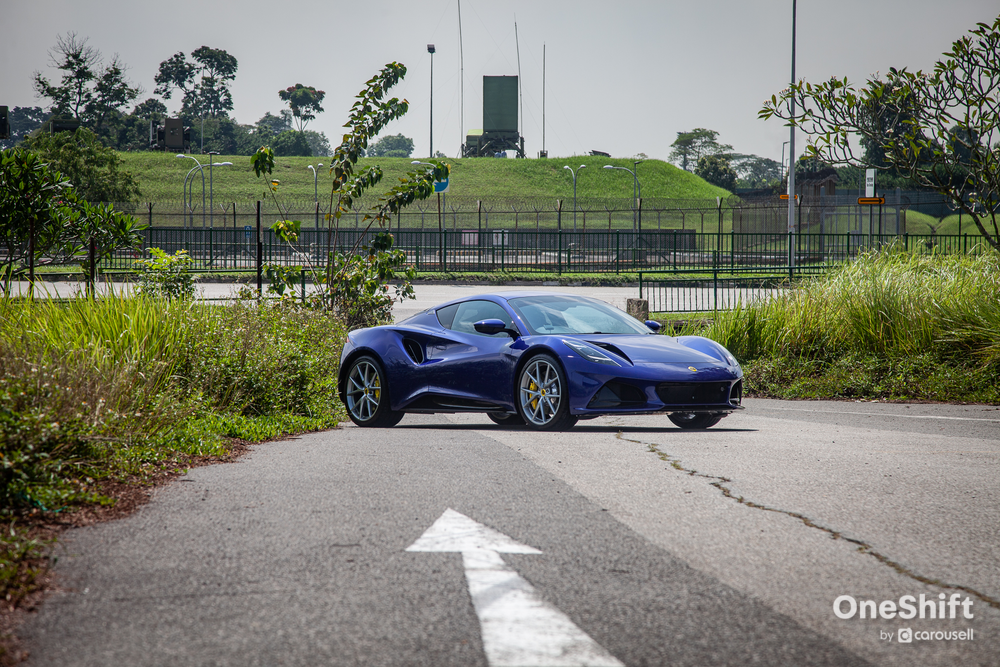
In this regard, the Emira’s supercar-mimicking looks might just win you over. Inspired by the Evija, the Emira is an organic, curvaceous shape that’s quite alluring.
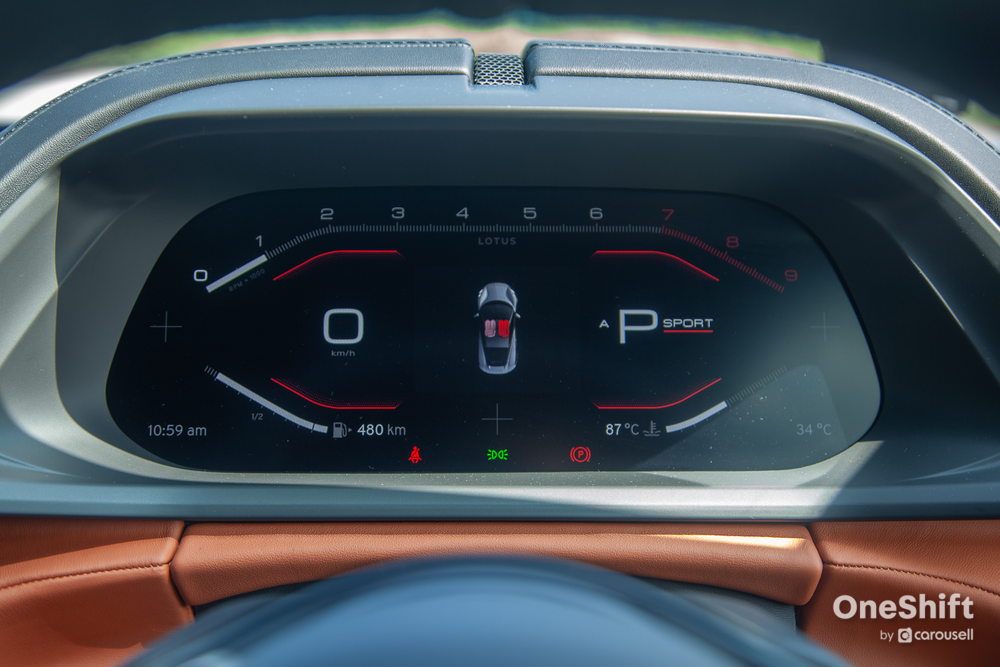
But back to objectivity. The Emira is an extremely capable Lotus and probably the brand’s best shot yet at getting wider acceptance from sports car buyers looking for an everyday machine. It’s also the Lotus that’s most familiar to millennials (or older). If Lotus wanted a halo, the Emira is it.
Photos by James Wong
---
Sell your car to us for up to $5,000 more than market prices. Get a quote now!








Get the Best Price for your used car
from 500+ dealers in 24 hours

- Convenient and Hassle-Free
- Consumer Protection
Transparent Process
With No Obligation
